Wilhelmina Of The Netherlands
 From Nwe
From Nwe | Wilhelmina | ||
|---|---|---|
| Queen of the Netherlands | ||
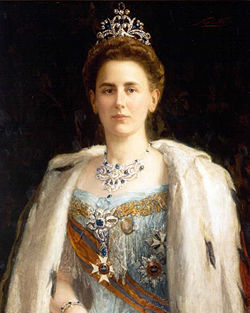 |
||
| Reign | 23 November 1890 – 4 September 1948 (57 years) | |
| Born | August 8, 1880 | |
| The Hague, Netherlands | ||
| Died | November 28, 1962 | |
| Het Loo, Apeldoorn, Netherlands | ||
| Buried | Nieuwe Kerk (Delft) Netherlands | |
| Predecessor | William III of the Netherlands | |
| Successor | Juliana of the Netherlands | |
| Consort | Hendrik of Mecklenburg-Schwerin | |
| Issue | Juliana of the Netherlands | |
| Royal House | Orange-Nassau | |
| Royal anthem | Wien Neerlands Bloed (until 1932) Het Wilhelmus (from 1932) |
|
| Father | William III of the Netherlands | |
| Mother | Emma of Waldeck and Pyrmont | |
Wilhelmina (Wilhelmina Helena Pauline Marie of Orange-Nassau) (August 31 1880 – November 28 1962) was queen regnant of the Netherlands from 1890 to 1948. Her mother, Queen Emma, acted as regent until 1898, when Wilhelmina came of age. She reigned as Queen for fifty-eight years, longer than any other Dutch monarch. Wilhelmina's accession to the Dutch throne, however, broke the link with Luxembourg, which invoked a law forbidding a woman ruler and instead appointed the 73 year old Prince Adolph of Nassau-Weilburg as Grand Duke.[1] Her reign saw World War I and World War II, the Great Depression of 1933, and the decline of the Netherlands as a major colonial empire. Outside the Netherlands she is primarily remembered for her role in the Second World War, in which she proved to be a great inspiration to the Dutch resistance, as well as a prominent leader of the Dutch government in exile. She was succeeded by her daughter, Juliana in whose favor she abdicated. Juliana in her turn abdicated in favor of her daughter, Beatrix. Holland was the only nation to have female heads of state throughout the whole of the twentieth century.
Wilhelmina won respect and admiration for her role during World War II, proving that a woman was as capable as men in the daunting task of leading her nation through a major crises. In fact, as a woman, it may have been easier for her to take refuge outside her country; a man would be expected to lead the anti-occupation resistance in person. Her decision to abdicate when she felt that her work was completed allowed her daughter to help shape a new direction for the Dutch in the post-colonial space, for which she may have been better suited. Wilhelmina's willingness to reign as a constitutional monarch, refraining from political interference but offering advice and counsel, may well have strengthened Dutch democracy and determination not to become a Nazi-puppet state. Wilhelmina's concern for refugees, her fierce desire for Holland to remain a haven of peace in a troubled world, influenced Dutch passion for shaping post-World War II Europe as a place of peace and prosperity through closer political, economic, and security ties within the European Union.
Early life
Princess Wilhelmina Helena Pauline Marie of Orange-Nassau was born on August 31, 1880, in The Hague, Netherlands. She was the only child of King William III and his second wife, Emma of Waldeck and Pyrmont. Her childhood was characterized by a close relationship with her parents, especially with her father, who was already 63 years of age when she was born.
King William had three sons with his first wife, Sophie of Württemberg. However, when Wilhelmina was born, William had already outlived two of them and only the childless Prince Alexander was alive, so she was second in line to the throne from birth. When Wilhelmina was four, Alexander died and the young girl became heiress presumptive.
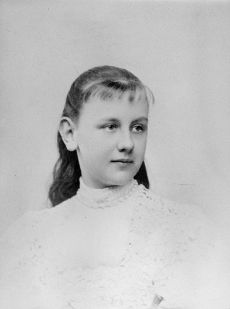
King William III died on November 23 1890, and, although Princess Wilhelmina became Queen of the Netherlands instantly, her mother, Emma, was named Regent. In 1895, Wilhelmina visited the venerable and formidable Queen Victoria, who thought her attractive, charming and intelligent. Wilhelmina's succession, however, ended the personal union with Luxembourg, which opted for a male ruler instead. The personal union by which Luxembourg shared a ruler with the Netherlands dated from 1815.
In 1901, she married Hendrik, Duke of Mecklenburg-Schwerin. Although the marriage was said to be essentially without love, initially Wilhelmina truly cared for Hendrik, and it is likely that those feelings were mutual. Hendrik however, suffered from his role as prince-consort, stating that it was boring to be nothing more than decoration, forced always to walk one step behind his wife. He had no power in the Netherlands, and Wilhelmina made sure this remained so.
A series of miscarriages also contributed to a crisis in their marriage. Prince Hendrik is reported to have had several illegitimate children. Over time the marriage became less happy. The birth of Juliana, on April 30, 1909, was met with great relief after eight years of childless marriage.
De facto reign
Tactful, and careful to operate within the limitations of what was expected by the Dutch people and their elected representatives, the strong-willed Wilhelmina became a forceful personality who spoke and acted her mind. These qualities showed up early on in her reign when, at the age of 20, Queen Wilhelmina ordered a Dutch warship to South Africa to rescue Paul Kruger, the embattled President of the Transvaal. For this, Wilhelmina gained international stature and earned the respect and admiration of people all over the world.
Wilhelmina had a stern dislike of the United Kingdom, which had annexed the republics of Transvaal and Orange Free State in the Boer Wars. The Boers were descendants of early Dutch colonists, to whom Wilhelmina felt very closely linked. This stern dislike did not apparently inhibit her from calling on the UK to rescue her from the Third Reich Nazis in 1940 though, by demanding of King George VI of the United Kingdom that he send her fighter squadrons to defend the Netherlands and a warship to pick up her, her family and Government. A warship, HMS Hereward, was sent to her rescue and brought her to safety in the UK, which generously offered facilities to her and her Government, including broadcasting time on the BBC to the Netherlands. This may have ameliorated her earlier dislike of the UK.
Queen Wilhelmina also had a keen understanding of business matters and her investments made her a very rich woman. The Dutch Royal Family is still reputed to be the single largest shareholder of Royal Dutch Shell.
Prior to the outbreak of the First World War, a young Wilhelmina visited the powerful Kaiser Wilhelm II of Germany, who boasted to the Queen of a relatively small country, "my guards are seven feet tall and yours are only shoulder-high to them." Wilhelmina smiled politely and replied, "Quite true, Your Majesty, your guards are seven feet tall. But when we open our dikes, the water is ten feet deep!"[2]
World War I
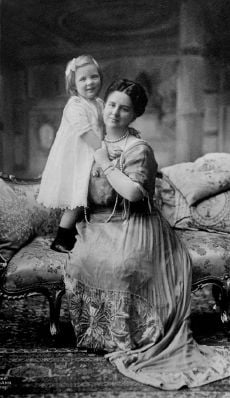
The Netherlands remained neutral during World War I. Germany had sizeable investments in the Dutch economy combined with a large trading partnership in goods. To weaken the German Empire, the United Kingdom blockaded Dutch ports. In response the Dutch government traded with Germany. German soldiers were given Edam cheese for their rations before an assault.
Wilhelmina was a "soldier's queen;" being a woman, she could not be Supreme Commander, but she nevertheless used every opportunity she had to inspect her forces. On many occasions she appeared without prior notice, wishing to see the reality, not a prepared show. She loved her soldiers, but was very unhappy with most of her governments, which used the military as a constant source for budget-cutting. Wilhelmina wanted a small but well trained and equipped army. However, this was far from the reality.
In the war, she felt she was a "Queen-On-Guard." She was always wary of a German attack, especially in the beginning. However, violation of Dutch territorial sovereignty came from both Britain and the United States, who, with the blockade, captured many Dutch trade and cargo ships in an attempt to disrupt the German war effort. This led to increased tensions between the Netherlands and the Allied forces.
Civil unrest, spurred on by the Bolshevik revolt in Imperial Russia in 1917, gripped the Netherlands after the war. A socialist leader named Troelstra tried to overthrow the government and the Queen. Instead of a violent revolution, he wanted to control the Tweede Kamer, the legislative body of the Netherlands Parliament, and hoped to achieve this by means of elections, convinced that the working class would support him. However, the popularity of the young Queen helped restore confidence in the government. Wilhelmina brought about a mass show of support by riding with her daughter through the mobs in an open carriage. It was very clear that the revolution would not succeed.
After the armistice ending World War I, Kaiser Wilhelm fled to the Netherlands, where he was granted political asylum by the Dutch government, partly owing to the Kaiser's family links with Queen Wilhelmina. In response to Allied efforts to get their hands on the deposed Kaiser, Wilhelmina called the Allied Ambassadors to her presence and lectured them on the rights of asylum.[3] Hindley says that the Dutch government was concerned that if they handed the Kaiser over, Holland's "standing as a country of refuge" would be compromised. She had been "closely involved in the decision."[4]
Between the wars
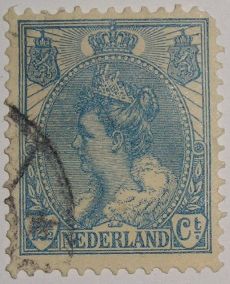
During the 1920s and 1930s, the Netherlands began to emerge as an industrial power. Engineers reclaimed vast amounts of land that had been under water by building the Zuiderzee Works. The death of Wilhelmina's husband, Prince Hendrik, in 1934 brought an end to a difficult year that also saw the passing of her mother Queen Emma.
The interbellum, and most notably the economic crisis of the '30s, was also the period in which Wilhelmina's personal power reached its zenith; under the successive governments of a staunch monarchist prime minister, Hendrik Colijn (Anti Revolutionary Party (ARP), Wilhelmina was deeply involved in most questions of state.
In 1939, Colijn's fifth and last government was swept away by a vote of no confidence two days after its formation. It is widely accepted that Wilhelmina herself was behind the formation of this last government, which was designed to be an extra-parliamentary or "royal" cabinet. The Queen was deeply skeptical of the parliamentary system and tried to bypass it covertly more than once.
She also arranged the marriage between her daughter Juliana and Bernhard of Lippe-Biesterfeld, a German prince who had lost most of his possessions after the Great War. Although it was claimed that he was initially a supporter of the Nazi regime, no hard evidence of this has ever been found or publicized. It should be stated, however, that there was never a serious investigation into the matter. Prince Bernhard later became a very popular figure in the Netherlands until his financial dealings were exposed in 1976, and he had to retire from his public role.
World War II
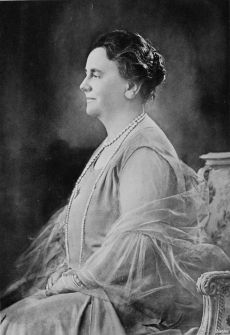
On May 10 1940, Nazi Germany invaded the Netherlands, and Queen Wilhelmina and her family were evacuated on HMS Hereward to the United Kingdom three days later. Queen Wilhelmina had wanted to stay in the Netherlands: she had planned to go to the southern province of Zeeland with her troops in order to coordinate further resistance from the town of Breskens and remain there until help arrived, much as King Albert I of Belgium had done during World War I. She went aboard a British cruiser at The Hague, which was to take her there. However, when she was on board the captain stated that he was forbidden to make contact with the Dutch shore, as Zeeland was under heavy attack from the Luftwaffe and it was too dangerous to return. Wilhelmina then took the decision to go to Britain, planning to return as soon as possible. Wilhelmina also spent time in Canada during the war, staying at the Governor General's residence, Rideau Hall. It was said that while she was there she made a great impact on the household, notably for living relatively simply. The Queen insisted on doing her shopping personally, walking the streets of Ottawa unassisted (though simply raising her hand to stop traffic whenever she wished to cross the road), and traveling to the United States on a regular civilian train.[5] In 1942, she addressed a joint session of the U.S. Congress. In 1992, the Roosevelt Study Center published a book of addresses by Wilhelmina, her daughter and grand-daughter called A Transatlantic Friendship: Addresses, celebrating a long relationship between Holland and the United States. One Dutch resistance fighter in London commented that the Government in exile was "a bunch of chattering wives" with the one exception being the only man among them, "the Queen."[2]
The Dutch armed forces in the Netherlands, apart from those in Zeeland, surrendered on May 15. In Britain, Queen Wilhelmina took charge of the Dutch government in exile, setting up a chain of command and immediately communicating a message to her people.
Relations between the Dutch government and the Queen were tense, with mutual dislike growing as the war progressed. Wilhelmina went on to be the most prominent figure, owing to her experience and knowledge. She was also very popular and respected among the leaders of the world. The government did not have a parliament to back them and had few employees to assist them. The Dutch prime minister Dirk Jan de Geer, believed the Allies would not win and intended to open negotiations with the Nazis for a separate peace. Therefore Wilhelmina sought to remove Jan de Geer from power. With the aid of a minister, Pieter Gerbrandy, she succeeded.
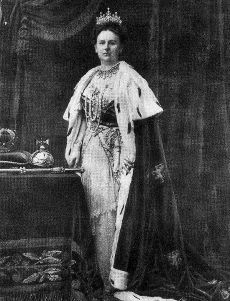
During the war her photograph was a sign of resistance against the Germans. Like Winston Churchill, Queen Wilhelmina broadcast messages to the Dutch people over Radio Oranje. Her regular broadcasts from London "bolstered morale in her occupied homeland; with her famous emblem of the marguerite flower," says Hindley, "she became the focus of national unity for hundreds of other Dutch exiles."[6] The Queen called Adolf Hitler "the arch-enemy of mankind." Her late-night broadcasts were eagerly awaited by her people, who had to hide in order to listen to them illegally.
During the war, the Queen was almost killed by a bomb that took the lives of several of her guards and severely damaged her country home near South Mimms in England. In 1944, Queen Wilhelmina became only the second woman to be inducted into the Order of the Garter. Churchill described her as the only real man among the governments-in-exile in London.
In England, she developed ideas about a new political and social life for the Dutch after the liberation. She wanted a strong cabinet formed by people active in the resistance. She dismissed De Geer during the war and installed a prime minister with the approval of other Dutch politicians. The Queen "hated" politicians, instead stating a love for the people. When the Netherlands was liberated in 1945, she was disappointed to see the same political factions taking power as before the war. Prior to the end of the war, in mid-March 1945, she traveled to the Allied occupied areas of southern Holland, visiting the region of Walcheren and the city of Eindhoven where she received a rapturous welcome from the local population.[7]
Following the end of World War II, Queen Wilhelmina made the decision not to return to her palace but move into a mansion in The Hague, where she lived for eight months, and she traveled through the countryside to motivate people, sometimes using a bicycle instead of a car. However, in 1947, while the country was still recovering from World War II, the revolt in the oil-rich Dutch East Indies saw sharp criticism of the Queen by the Dutch economic elite. Her loss of popularity and the forced departure from the East Indies under international pressure led to her abdication soon after.
Later years
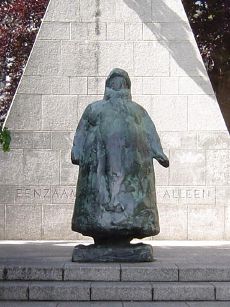
On September 4, 1948, after a reign of 58 years and 50 days, Wilhelmina abdicated in favor of her daughter Juliana saying that she had "finished her walk." Slipping out the back door after announcing her abdication, she informed her security detail that as she was now a princess and not Queen, their services were no longer required and would they please step out of the car.<rhttp://wiki.newworldencyclopedia.org/d/index.php?title=Wilhelmina_of_the_Netherlands&action=editef name=Caged/> After this, she was styled "Her Royal Highness Princess Wilhelmina of the Netherlands." After her reign, the influence of the Dutch monarchy began to decline but the country's love for its royal family continued. No longer queen, Wilhelmina retreated to Het Loo Palace, making few public appearances until the country was devastated by the North Sea flood of 1953. Once again she traveled around the country to encourage and motivate the Dutch people. She converted a wing of the palace to accommodate former resistance fighters and refugees.
During her last years she wrote her autobiography entitled, Eenzaam, maar niet alleen (Lonely but Not Alone), in which she gave account of the events in her life, and revealed her strong religious feelings and motivations.
Queen Wilhelmina died at the age of 82 on November 28 1962, and was buried in the Dutch Royal Family crypt in the Nieuwe Kerk in Delft, on December 8. The funeral was, at her request and contrary to protocol, completely in white to give expression to her belief that earthly death was the beginning of eternal life.[2]
Legacy
Had Wilhelmina not given the throne to her daughter before her death, she would have reigned for 72 years 5 days, which would have been the second-longest reign in Europe (behind that of Louis XIV of France), and the longest reign by a female monarch in history. An early lesson learned by Wilhelmina was that the Dutch people were not "hers" but that she was "theirs." This sense of obligation towards the people shaped her life. (On her first public appearance, when she saw the crowd, she asked Queen Emma if "all these people belong to me?" "No, my child," replied the Queen-Regent, "it is you who belong to all these people.") Blom comments that while the nineteenth century Dutch monarchs, all men, tension was generated in Dutch public life because of their political ambitions, "their twentieth century successors—all Queens—enjoyed great popularity" and fully respected their constitutional role. Wilhelmina, though, always made her opinion known behind the scene and had a reputation for asking probing questions. Wilhelmina and her daughter both knew how to "embody the unity of the Dutch nation."[8] During her long reign, she "epitomized the solid Dutch virtues" with her "frugal and unfrivolous dress" (despite her personal wealth) and "was a symbol of continuity in a changing world."[2]
Her daughter continued her work with refugees. Juliana's concern for "all aspects of social welfare"[9] would win her the admiration of the Dutch, as her mother's war-time leadership had earned her their respect and gratitude. Possibly, a male monarch who fled his occupied country instead of joining the underground resistance would have attracted mockery; as a woman, it was arguably easier for Wilhelmina to take refuge in the UK without attracting criticism. As a woman and as a mother, she could personify concern for her people without taking up arms against the enemy. Her daughter, too, may have found herself able to symbolize a new understanding of Dutch identity in a world in which they now longer possessed an empire. Her passion for social justice and for international development encouraged the Dutch to implement a sophisticated welfare system and to contribute to such global efforts as the peace-keeping missions of the United Nations and as pioneers of European unity as a platform for peace and prosperity. Wilhelmina's legacy lived on into a third generation of a Queen's reign in Holland, which had women monarchs throughout the whole of the twentieth century, a unique history. Wilhelmina's war time leadership also demonstrated that a woman head of state could deal with crises as well as, if not better than, a man could; certainly, she proved her own competency and did so very convincingly.
Ancestry
| Ancestors of Wilhelmina of the Netherlands | |||||||||||||||||||||||||||||||||||||||||||||||||||||||||||||||||||||||||||||||||||||||||||||||||||||||||||||||||||||||||||||||||||||||||||||||||||||||||||||||||||||||||||||||||||||||||||||||||||||||||||||||||||||||||||||||||||||||||||||||||||||||||||||||||||||||||||||||||||||||||||||||||||||||||||||||||||||||||||||||||||||||||||||||||||||||||||||||||||||||||||||||||||||||||||||||||||||||||||||||||||||||||||||||||||||||||||||||||||||||||||||||||||||||||||||||||||||||||||||||||||||||||||||||||||||||||||||||||||||||||||||||||||||||||||||||||
|---|---|---|---|---|---|---|---|---|---|---|---|---|---|---|---|---|---|---|---|---|---|---|---|---|---|---|---|---|---|---|---|---|---|---|---|---|---|---|---|---|---|---|---|---|---|---|---|---|---|---|---|---|---|---|---|---|---|---|---|---|---|---|---|---|---|---|---|---|---|---|---|---|---|---|---|---|---|---|---|---|---|---|---|---|---|---|---|---|---|---|---|---|---|---|---|---|---|---|---|---|---|---|---|---|---|---|---|---|---|---|---|---|---|---|---|---|---|---|---|---|---|---|---|---|---|---|---|---|---|---|---|---|---|---|---|---|---|---|---|---|---|---|---|---|---|---|---|---|---|---|---|---|---|---|---|---|---|---|---|---|---|---|---|---|---|---|---|---|---|---|---|---|---|---|---|---|---|---|---|---|---|---|---|---|---|---|---|---|---|---|---|---|---|---|---|---|---|---|---|---|---|---|---|---|---|---|---|---|---|---|---|---|---|---|---|---|---|---|---|---|---|---|---|---|---|---|---|---|---|---|---|---|---|---|---|---|---|---|---|---|---|---|---|---|---|---|---|---|---|---|---|---|---|---|---|---|---|---|---|---|---|---|---|---|---|---|---|---|---|---|---|---|---|---|---|---|---|---|---|---|---|---|---|---|---|---|---|---|---|---|---|---|---|---|---|---|---|---|---|---|---|---|---|---|---|---|---|---|---|---|---|---|---|---|---|---|---|---|---|---|---|---|---|---|---|---|---|---|---|---|---|---|---|---|---|---|---|---|---|---|---|---|---|---|---|---|---|---|---|---|---|---|---|---|---|---|---|---|---|---|---|---|---|---|---|---|---|---|---|---|---|---|---|---|---|---|---|---|---|---|---|---|---|---|---|---|---|---|---|---|---|---|---|---|---|---|---|---|---|---|---|---|---|---|---|---|---|---|---|---|---|---|---|---|---|---|---|---|---|---|---|---|---|---|---|---|---|---|---|---|---|---|---|---|---|---|---|---|---|---|---|---|---|---|---|---|---|---|---|---|---|---|---|---|---|---|---|---|---|---|---|---|---|---|---|---|---|---|---|---|---|---|---|---|---|---|---|---|---|---|---|---|---|---|---|---|---|---|---|---|---|---|---|---|---|---|---|---|---|---|---|---|---|---|---|---|---|---|---|---|---|---|---|---|---|---|---|---|---|---|---|---|---|---|---|---|---|---|---|---|---|---|---|---|---|---|---|---|---|---|---|---|---|---|---|
|
|||||||||||||||||||||||||||||||||||||||||||||||||||||||||||||||||||||||||||||||||||||||||||||||||||||||||||||||||||||||||||||||||||||||||||||||||||||||||||||||||||||||||||||||||||||||||||||||||||||||||||||||||||||||||||||||||||||||||||||||||||||||||||||||||||||||||||||||||||||||||||||||||||||||||||||||||||||||||||||||||||||||||||||||||||||||||||||||||||||||||||||||||||||||||||||||||||||||||||||||||||||||||||||||||||||||||||||||||||||||||||||||||||||||||||||||||||||||||||||||||||||||||||||||||||||||||||||||||||||||||||||||||||||||||||||||||
| House of Orange-Nassau Cadet Branch of the House of Nassau Born: 31 August 1880; Died: 28 November 1962 |
||
|---|---|---|
| Regnal Titles |
||
| Preceded by: William III |
Queen of the Netherlands 1890–1948 |
Succeeded by: Juliana |
| Dutch royalty | ||
| Preceded by: Alexander, Prince of Orange |
Heir to the Dutch throne as heiress presumptive 1884–1890 |
Succeeded by: William Ernest |
Notes
- ↑ Hindley (2000), 209.
- ↑ 2.0 2.1 2.2 2.3 Time, Caged no more. Retrieved August 18, 2008.
- ↑ Time, Worried Queen. Retrieved August 18, 2008.
- ↑ Hindley (2000), 203.
- ↑ Robert Hamilton Hubbard, Rideau Hall: An Illustrated History of Government House, Ottawa, from Victorian Times to the Present (Montreal, CA: McGill-Queen's University Press, 1977, ISBN 9780773503106), 203.
- ↑ Hindley (2000), 205.
- ↑ Van der Zee (1998), 200-203.
- ↑ Blom (1998), 438-9.
- ↑ Hindley (2000), 205.
References
ISBN links support NWE through referral fees
- Braam, Elisabeth van, and Eelco Elzenga. 1998. In Royal Array: Queen Wilhelmina, 1880-1962. Zwolle, NL: Waanders Publishers in collaboration with Stichting Historische Verzamelingen van het Huis Oranje-Nassau, Stichting Paleis Het Loo National Museum. ISBN 9789040092756.
- Blom, J.C.H. and Emiel Lamberts. 1998. History of the Low Countries. New York: Berghahn Books. ISBN 9781571810847.
- Hindley, Geoffrey. 2000. The Royal Families of Europe. New York: Carroll & Graf. ISBN 9780786708284.
- Van der Zee, Henri A. 1998. The Hunger Winter: Occupied Holland 1944-1945. Lincoln, NE: University of Nebraska Press. ISBN 9780585286471.
- Wilhelmina. 1960. Lonely but Not Alone. New York: McGraw-Hill.
- Wilhelmina, Juliana, and Beatrix. 1992. A Transatlantic Friendship: Addresses. Roosevelt Study Center publications, no. 12. Middelburg, NL: Roosevelt Study Center. ISBN 9789071654107.
Credits
New World Encyclopedia writers and editors rewrote and completed the Wikipedia article in accordance with New World Encyclopedia standards. This article abides by terms of the Creative Commons CC-by-sa 3.0 License (CC-by-sa), which may be used and disseminated with proper attribution. Credit is due under the terms of this license that can reference both the New World Encyclopedia contributors and the selfless volunteer contributors of the Wikimedia Foundation. To cite this article click here for a list of acceptable citing formats.The history of earlier contributions by wikipedians is accessible to researchers here:
- Wilhelmina of the Netherlands history
The history of this article since it was imported to New World Encyclopedia:
- History of "Wilhelmina of the Netherlands"
Note: Some restrictions may apply to use of individual images which are separately licensed.
↧ Download as ZWI file | Last modified: 02/04/2023 04:48:46 | 63 views
☰ Source: https://www.newworldencyclopedia.org/entry/Wilhelmina_of_the_Netherlands | License: CC BY-SA 3.0
 ZWI signed:
ZWI signed: KSF
KSF